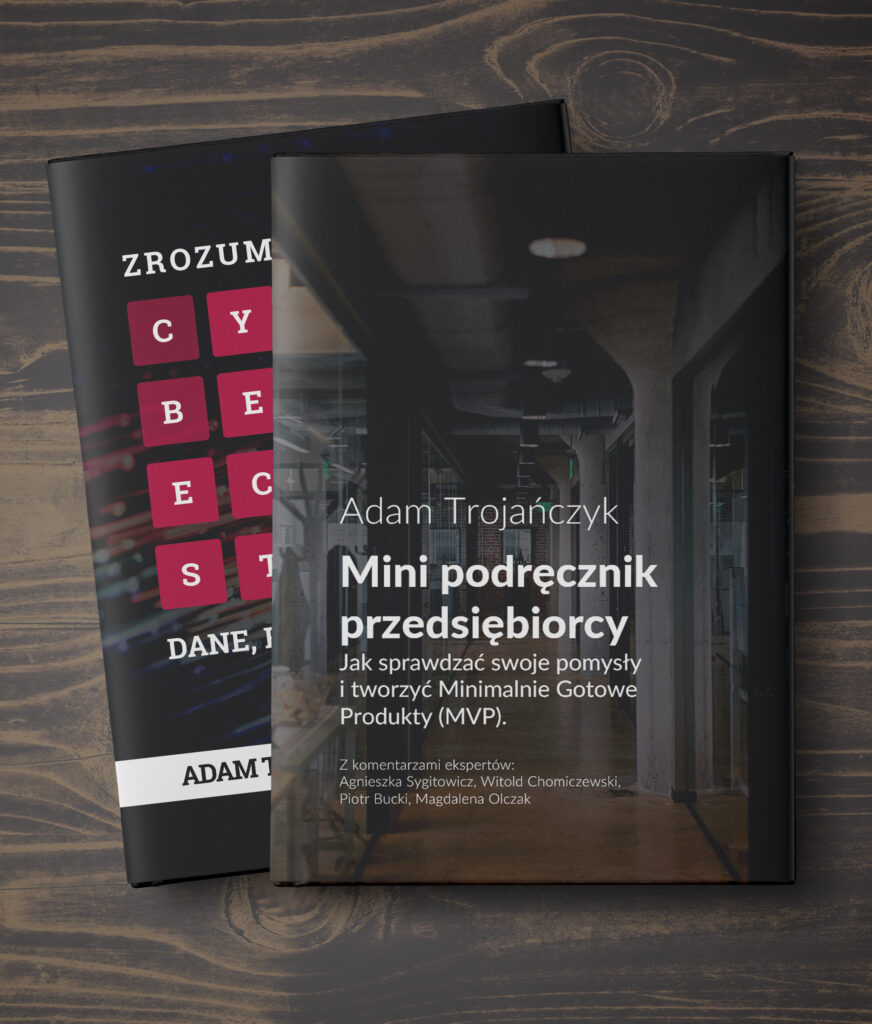Last year, Gartner released a report predicting what technologies will be at the forefront in the coming years. One of them is the Internet of Behaviour (IoB).
The report’s creators argue that we have already moved beyond adapting this technology and have begun to face its consequences. The Internet of Behaviour aims to be the definition of what it means to be human in a digital world and what we, as a society, will have to face in the coming years.
Table of contents
- What is the Internet of Behaviour?
- The Internet of Behaviour does not exist without the Internet of Things
- Understanding the Internet of Things
- The capabilities of the Internet of Behaviour
- Scale is needed
- How the Internet of Behaviour is affecting businesses
- Internet of Behaviour is the missing piece for further development
- The Dark Side of the Internet of Behaviour
- What does the future hold for the Internet of Behaviour ?
- Summary
What is the Internet of Behaviour?

Before I explain the Internet of Behaviour (IoB), I need to mention the Internet of Things (IoT). A term with which IoB is directly related. Internet of Things refers to physical objects (mostly things, but some sources even mention animals and humans) that are (or can be) connected to the Internet and communicate with each other.
The devices perform specific actions, collect information, and analyze it locally or send it externally to, for example, the cloud. Companies that produce these devices use the data collected by the devices to conduct a wide range of analytics – for example:
- what we currently have in the fridge and what we should order,
- wristbands that “tell” us how to exercise,
- or the company’s research and development department, which, thanks to the fact that our washing machine is connected to the Internet, can determine which programs we use most often and on this basis create more and more tailored to our needs products.
The Internet of Behaviour does not exist without the Internet of Things
The Internet of Things is constantly evolving. The data collected and shared by devices (BI, Big Data, CDP, etc.), for example, provides valuable information about the behaviors, interests, and preferences of its users.
The Internet of Behaviour attempts to analyze and understand data from technology from a behavioral psychology perspective.
In short, the Internet of Behaviour combines technology, data analytics, and behavioral psychology. It is an attempt to make sense of human behavior through data mining.

Understanding the Internet of Things
The data collected are analyzed. Based on the conclusions from the results, companies can create a new user experience (UX), search optimization (SXO), and newer or improved current ways to market products or services. The knowledge that companies can gain from this analysis is a huge lever for extremely rapid growth.
In theory, all that is needed is statistical research that uses technology to map the daily habits of IoT systems, users, and their behaviors (e.g., throw-in data from social networks, location tracking, conversation history, voice commands, and tone, or facial recognition). Of course, for ethical and legal reasons, without entirely invading our privacy.
The capabilities of the Internet of Behaviour
A single device, such as a smartphone, can track a user’s online movements as well as his actual geographic position. When a user connects the smartphone to a laptop, social network, instant messenger, voice assistant, alarm, camera, electronic home lock, lighting system, or a car, it turns out that a lot more can be learned through data analysis about the user’s interests, tastes, mindset, or even political and shopping preferences than a user realizes.

Home IoT devices run on the same email address, IP address (unless using a VPN), phone number as the user’s laptop, mobile devices, and connected peripherals such as a wristband or smartwatch. Those information allows companies (and ultimately third parties):
- know when a user returns or is at home, exercising, walking, or driving,
- can change the way they sell or target advertising,
- can be aware of ongoing conversations and the emotional state the user is in,
- can know when the user is hungry because, e.g., his fridge is empty and he hasn’t paid using his phone in any point of gastronomic or store for a long time,
- can test the effectiveness of their campaigns based on users’ emotions,
- can deliver fully personalized search results consistent with how users behave or perceive reality.
As companies learn more and more about users, they can try to influence their behavior.
A good example of using data to influence behavior is, for example, an app that can analyze diet, sleep, or physical activity and alert you to unfavorable patterns and suggest behavior modifications toward more positive ones.
In contrast, using collected data to influence behavior by providing personalized information that creates an alternative reality and influences, for example, emerging trends or political preferences raises questions.
Scale is needed
IoB to function without any problems needs a huge scale of devices in the market. According to Security Today, by the end of 2021, there will be 35 billion IoT devices installed worldwide. That number will increase by 4 billion compared to 2020. Martech Advisor claims that by 2030 the number will reach 125 billion devices. When we convert this to customers/users, we find that there will be an average of 5 connected devices per customer.
How the Internet of Behaviour is affecting businesses
With the Internet of Things, companies can access quintillions of pieces of information, allowing them to examine the journey their customer has taken from beginning to end.
Companies will be able to obtain tangible data such as:
- where interest in the product began,
- what path the customer took, and where and how they made their purchase.
It will allow companies to create more touchpoints for company-customer interactions and do it at an earlier and earlier stage. Companies will also find ways to communicate with the potential consumer earlier than at the point of purchase itself.
Let’s say a customer has a smart lighting system in their home that they can control with their phone. It allows its developers to use the app to retrieve the data they need and, for example, determine when their customer is home and when they are sleeping.
With a smart fridge, companies can know what a customer has bought, what they have cooked (thanks to search results), and with a smart microwave, they can tell exactly what they have heated (because it will choose the perfect setting once the customer tells it what he/she is going to heat).
Internet of Behaviour is the missing piece for further development

Analytics, user tracking, A/B testing, and all the other things that companies have been using for a very long time have been used to map the user journey. With IoT and IoB, companies will not only get access to past performance and data, but they will be able to predict or guess the future behavior of their customers. It will allow them to plan their development, marketing, and sales efforts and possess a deep, personalized understanding of their customers.
The Dark Side of the Internet of Behaviour
Awareness of the processing of private data arouses some resistance in people. Some of us express our displeasure about giving our data to companies and third parties. However, there are also those among us who do not see a problem or are happy to do it, as long as it brings them added value.
With the data about our health habits or driving mode that we share with the insurance company, we can get a fully personalized insurance premium. It is a hit for healthy and active people who drive eco-friendly cars.

The danger appears when our health deteriorates, and the insurance company immediately raises the premium or does not pay us the claim.
It is also worth mentioning that our behavioral data can allow cybercriminals to access our behavioral patterns. They can sell hacked access codes to our homes, delivery routes, home return routes, and even without conducting field operations, know where we take our children to daycare.
The potential is limitless. However, most likely, they will use our data to conduct phishing – impersonating specific individuals to commit fraud.
For those interested, I recommend reading about the largest cybersecurity attack in history called the Solarwinds hack.
Even using only large and well-known IoT solutions do not give you a complete sense of security. Many companies sell data between themselves or other subsidiaries. Google, Facebook, and Amazon continue to acquire and create software that potentially enters the user of one particular app into their entire ecosystem of tools.
Additionally, the fact that these companies have sold data about their users to governments and institutions in the past is not encouraging. The legal protection of our data, in this case, is practically nil.
What does the future hold for the Internet of Behaviour ?
Tracking location, recognizing faces, performing operations on large data sets, and combining that data with related human behavioral events is a terrifying vision of the future for some (and an eldorado for others).
Organizations will begin to use their customers’ data to influence their behavior, the information they provide (creating an alternate reality), and influence emerging trends.
Gartner predicts that by the end of 2025, more than half of the world’s people will be covered by a private, commercial, or government Internet of Behaviour program. Furthermore, Gartner estimates that by 2023, the individual actions of 40% of the world’s population will be digitally tracked to influence our behavior.
Summary
Privacy and consumer rights should always come first. So, if we decide to implement the Internet of Behaviour in our enterprises, we should consider all aspects and threats it brings. It is essential to secure IoT systems (which play a key role here), systems for collecting, monitoring, and analyzing, and to limit access to sensitive user data.
On the other hand, as consumers, we should realize how much risk is involved in using smart devices and verify the systems we use.
Sources and supplementary materials:
https://www.gartner.com/smarterwithgartner/gartner-top-strategic-technology-trends-for-2021/ https://www.bmc.com/blogs/iob-internet-of-behavior/ https://www.vectoritcgroup.com/en/tech-magazine-en/user-experience-en/what-is-the-internet-of-behaviour-iob-and-why-is-it-the-future/ https://internationalbanker.com/technology/what-is-the-internet-of-behaviour/ https://gbksoft.com/blog/internet-of-behaviors/ https://axiosholding.com/say-hello-to-the-internet-of-behaviors-what-is-it-why-you-should-care/






